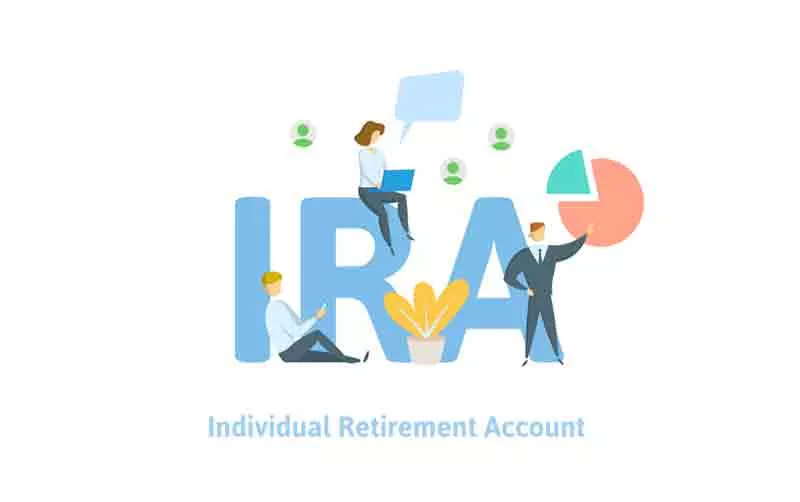IRA Contributions
Are you looking to boost your retirement savings? Look no further than an IRA, or individual retirement account. With a little bit of planning and effort, you can make the most of your IRA contributions and set yourself up for a comfortable retirement.
So, what are some strategies for maximizing your IRA contributions? Here are 10 simple tips to help you get started:
1. Start early
The earlier you start saving for retirement, the more time your money has to grow. Starting early also allows you to take advantage of compound interest, where the interest earned on your savings is reinvested and begins earning interest itself. For example, if you start saving $5,500 per year (the current contribution limit for those under 50) at age 25, and earn an average annual return of 8%, by age 65 you will have saved over $1.2 million. However, if you wait until age 35 to start saving the same amount, you will only have about $732,000 by age 65. What is compound interest and how it work?
2. Make catch-up contributions
If you’re 50 or older, you’re eligible to make catch-up contributions to your IRA. For the 2020 tax year, the catch-up contribution limit is $1,000, which means you can contribute an additional $1,000 to your IRA beyond the regular contribution limit of $6,000. This can give a big boost to your retirement savings if you’re behind on your saving goals. More information about catch-up contributions from the IRS
3. Contribute to a Roth IRA
While traditional IRAs offer tax deductions for contributions, Roth IRAs offer tax-free withdrawals in retirement. This can be a big advantage if you expect to be in a higher tax bracket in retirement. Additionally, there are no required minimum distributions for Roth IRAs during the lifetime of the original owner. Learn more about Roth IRA
4. Look into a spousal IRA
If one spouse is not working, or has a much lower income than the other, they may be able to contribute to a
spousal IRA. This allows the non-working spouse to make contributions to their own IRA based on the working spouse’s income. This can be a great way to boost retirement savings for both spouses. Learn more about spousal IRA
5. Maximize your employer match
Many employers offer a 401(k) or similar retirement plan with a matching contribution. Be sure to take advantage of this, as it’s essentially free money for your retirement savings. For example, if your employer offers a 3% match, you should at least contribute enough to get the full match. Learn more about employer matching contributions
6. Consider a self-employed 401(k) or solo 401(k)
If you’re self-employed, you may be able to contribute more to your retirement savings by setting up a self-employed 401(k) or solo 401(k). These plans allow self-employed individuals to make both employer and employee contributions, potentially resulting in a higher overall contribution limit. Learn more about self-employed 401(k) and solo 401(k)
7. Utilize tax-loss harvesting
Tax-loss harvesting is the practice of selling investments at a loss in order to offset capital gains from other investments. If you have investments in a taxable account that have decreased in value, selling them can offset any capital gains you’ve realized in the year, reducing your overall tax bill. You can then use the proceeds to make a contribution to your IRA. Learn more about tax-loss harvesting
8. Consider a back-door Roth IRA
If your income is too high to contribute to a Roth IRA directly, you may be able to utilize a back-door Roth IRA. This involves making a contribution to a traditional IRA and then immediately converting it to a Roth IRA. While there may be some tax implications to this strategy, it can still be a great way to get money into a Roth IRA. Learn more about back-door Roth IRA
9. Keep an eye on contribution limits
The contribution limits for IRAs change periodically, so be sure to check the limits each year and adjust your contributions accordingly. Additionally, be aware of any income limits that may affect your ability to contribute to a Roth IRA. Check the contribution limits for 2020 and 2021 from the IRS
10. Diversify your investments
As with any investment, it’s important to diversify your IRA holdings. This means spreading your money across different asset classes, such as stocks, bonds, and real estate. Diversification can help manage risk and potentially increase returns over the long term. Learn more about diversification
By implementing these simple strategies, you can take control of your retirement savings and ensure that you’re making the most of your IRA contributions. Don’t wait to start planning for your future, start today!
Table of Contents:
- 1. Start early
- 2. Make catch-up contributions
- 3. Contribute to a Roth IRA
- 4. Look into a spousal IRA
- 5. Maximue your employer match
- 6. Consider a self-employed 401(k) or solo 401(k)
- 7. Utilize tax-loss harvesting
- 8. Consider a back-door Roth IRA
- 9. Keep an eye on contribution limits
- 10. Diversify your investments
In conclusion, maximizing your IRA contributions is essential for ensuring a secure retirement. By starting early, making catch-up contributions, considering a Roth IRA, spousal IRA, employer match, self-employed 401(k) or solo 401(k), utilizing tax-loss harvesting, back-door Roth IRA, keeping an eye on contribution limits, and diversifying your investments, you can make the most of your IRA and reach your retirement goals. Learn more about traditional vs Roth IRA


Leave a Comment